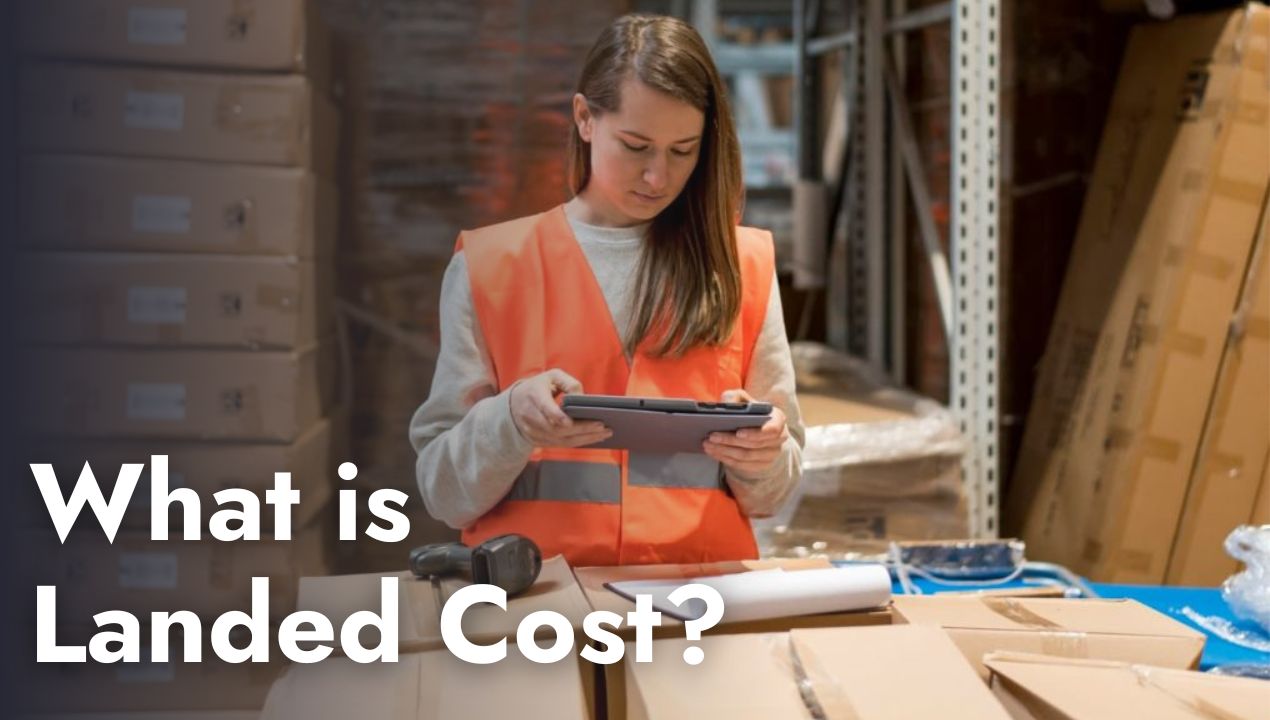Share this
What Is Factory Overhead? Here's Everything You Need to Know
by Shipfusion Team on Dec. 27, 2024

For ecommerce businesses that manufacture their own products, managing production expenses is essential for profitability and growth. But what is factory overhead, really? Understanding these expenses is the first step to employing smart strategies for optimizing them. We cover everything from accounting to forecasting in this article.
What Is Factory Overhead In Ecommerce Manufacturing?
Ecommerce brands producing their own goods face unique challenges in controlling costs. Factory overhead includes all indirect costs necessary for production, and failing to account for these can lead to inaccurate pricing or reduced profitability.
Factory overhead includes expenses such as:
- Indirect Labor: Wages for supervisors, quality control personnel, and maintenance staff.
- Indirect Materials: Items like cleaning supplies or lubricants for machines.
- Utilities: Electricity, water, and heating required for production facilities.
- Depreciation: Wear and tear on equipment, such as sewing machines or conveyor belts.
- Facility Costs: Rent, property taxes, and insurance for manufacturing spaces.
For ecommerce manufacturers, these costs are a crucial part of calculating the true cost of production, ensuring accurate pricing, and sustaining long-term profitability.
The Impact of Factory Overhead on Ecommerce Operations
Indirect costs might seem small, but they can significantly influence the overall success of an ecommerce brand. Mismanaging factory overhead can lead to pricing miscalculations, inefficiencies, and lost opportunities for growth.
Pricing Strategy
Accurately incorporating overhead into product pricing ensures products are profitable while remaining competitive. For example, a skincare brand selling handmade items must factor in the costs of utilities for climate-controlled production environments or risk underpricing their goods.
Operational Efficiency
Analyzing factory overhead helps pinpoint inefficiencies in production. High utility costs may highlight opportunities for upgrading to energy-efficient machinery, while excessive indirect labor expenses could signal a need for workflow improvements.
Scalability
As an ecommerce business grows, overhead costs often increase. Planning for these changes and finding ways to streamline operations, such as outsourcing non-core activities, ensures scalability without sacrificing margins.
Strategies to Manage Factory Overhead In Ecommerce
Keeping factory overhead under control requires proactive management and tailored strategies. These approaches can help ecommerce businesses reduce costs while maintaining efficiency and quality.
1. Implement Activity-Based Costing (ABC)
Ecommerce manufacturers benefit from assigning overhead costs to specific activities, such as machine setup, equipment maintenance, or packaging. This method provides a clear understanding of which processes consume the most resources, allowing businesses to target cost-saving initiatives.
For example, a custom jewelry brand may discover that polishing certain items significantly increases overhead. By optimizing this process or renegotiating material costs, the business can reduce expenses without compromising quality.
2. Optimize Energy Use
Utilities often account for a large portion of factory overhead. By adopting energy-efficient machinery, adjusting production schedules to off-peak hours, or using smart systems to monitor energy consumption, businesses can cut utility costs.
3. Outsource Non-Core Activities
Many ecommerce manufacturers reduce overhead by outsourcing activities like product assembly or packaging. This allows businesses to focus on core manufacturing tasks while transferring variable costs to a third party. For instance, outsourcing order fulfillment to Shipfusion can help eliminate the need for in-house storage and labor.
4. Monitor and Forecast Overhead Variances
Overhead costs can fluctuate due to seasonal demand, market conditions, or unexpected events like equipment breakdowns. Regularly reviewing overhead variances allows businesses to adjust pricing or budgets proactively, minimizing financial surprises.
5. Leverage Technology for Efficiency
Modern ecommerce platforms and inventory management systems offer real-time visibility into costs, enabling businesses to make data-driven decisions. Integrating these tools into production workflows can reduce manual labor, improve accuracy, and streamline operations.
Common Challenges In Managing Factory Overhead
Managing factory overhead can be complex, particularly for ecommerce brands balancing production and fulfillment. Recognizing these challenges and addressing them head-on is key to success.
1. Balancing Cost and Quality
Reducing overhead costs should not come at the expense of product quality. For example, cutting back on machine maintenance may save money in the short term but could lead to costly downtime or reduced output over time.
2. Accounting for Hidden Costs
Hidden costs like waste disposal, training, or idle time in production can inflate factory overhead. Identifying these expenses and taking steps to minimize them—such as through process optimization—helps keep costs manageable.
3. Scaling Without Overspending
As ecommerce brands scale, production demands often increase, along with overhead. Maintaining flexibility in operations through outsourced fulfillment or shared warehouses and fulfillment centers can help control costs while supporting growth.
Why Not Cut Fulfillment Costs Along with Manufacturing Overhead?
While manufacturing overhead impacts production, fulfillment plays a key role in delivering products efficiently and cost-effectively to customers. This is where partnering with a third-party logistics (3PL) provider like Shipfusion becomes invaluable. Shipfusion offers ecommerce brands flexible storage, inventory management, and fulfillment solutions that reduce overhead by eliminating the need for dedicated warehouse space and fulfillment staff.
With technology-driven tools and seamless integration into your ecommerce operations, Shipfusion ensures your products reach customers quickly and accurately, allowing you to focus on scaling your business without the burden of fulfillment logistics.
Request a free consultation today.
Share this
You May Also Like
These Related Articles

Cost to Manufacture Broken Down Piece-By-Piece

What Is Landed Cost? How To Calculate Your Landed Cost

Supply Chain Analytics: The Ecommerce Advantage You Can’t Afford to Ignore
- April 2025 (9)
- March 2025 (26)
- February 2025 (26)
- January 2025 (37)
- December 2024 (16)
- November 2024 (23)
- October 2024 (22)
- September 2024 (27)
- August 2024 (9)
- July 2024 (8)
- June 2024 (5)
- May 2024 (8)
- April 2024 (8)
- March 2024 (6)
- February 2024 (6)
- January 2024 (5)
- December 2023 (3)
- November 2023 (3)
- October 2023 (5)
- September 2023 (4)
- August 2023 (2)
- July 2023 (1)
- June 2023 (4)
- March 2023 (2)
- October 2022 (1)
- September 2022 (5)
- August 2022 (4)
- July 2022 (7)
- June 2022 (4)
- May 2022 (4)
- April 2022 (6)
- March 2022 (2)
- February 2022 (1)
- January 2022 (3)
- December 2021 (2)
- November 2021 (4)
- October 2021 (2)
- September 2021 (5)
- August 2021 (4)
- July 2021 (4)
- June 2021 (3)
- May 2021 (2)
- April 2021 (3)
- March 2021 (3)
- February 2021 (3)
- January 2021 (2)
- December 2020 (4)
- November 2020 (2)
- October 2020 (4)
- September 2020 (2)
- July 2020 (5)
- June 2020 (4)
- May 2020 (2)
- April 2020 (2)
- March 2020 (4)
- February 2020 (1)
- December 2019 (1)
- May 2018 (1)
- March 2018 (2)
- February 2018 (3)
- January 2018 (3)
- November 2017 (3)
- July 2017 (4)
- March 2017 (3)
- February 2017 (5)
- January 2017 (3)
- December 2016 (4)
- November 2016 (6)
- October 2016 (6)
- October 2015 (1)
- September 2015 (1)
- June 2015 (3)
- May 2015 (3)
- August 2014 (1)
- July 2014 (1)
- March 2014 (1)
- February 2014 (1)